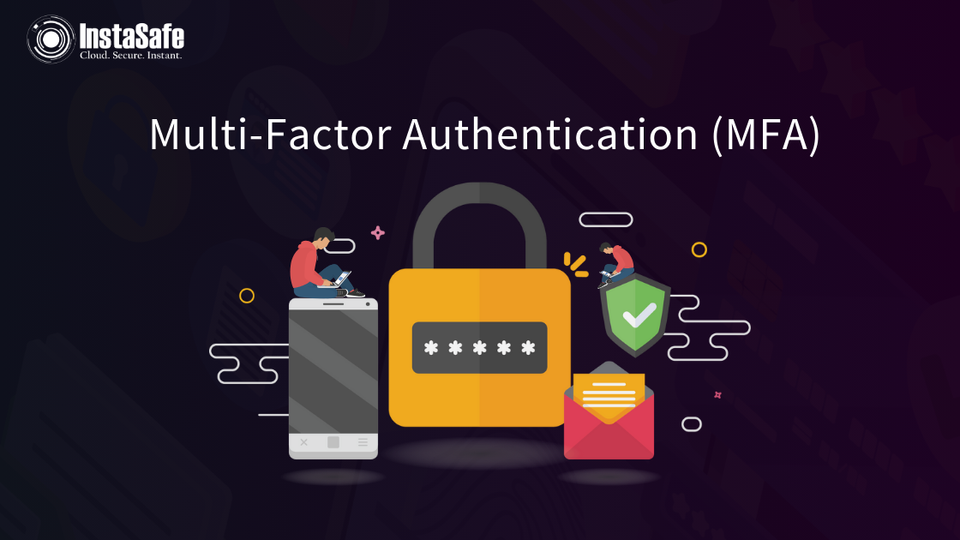IDAM Multi-Factor Authentication

InstaSafe Multi-Factor Authentication (MFA) is the cornerstone of our Identity and Access Management (IDAM) solution, providing an extra layer of defense against unauthorized access. Our commitment to security is evident in the diverse array of MFA methods supported, ranging from traditional One-Time Passwords (OTPs with 6 digit unique numeric code) to cutting-edge biometrics, hardware tokens, and passwordless options.
Supported Multi-Factor Authentication Methods:
- OTP over Email/SMS/Voice OTP:
- Enable users to receive One-Time Passwords via email or SMS/Voice OTP for secure login.
- Voice OTP's will be delivered using a phone call to the user mobile number registered with IAM or Directory.
- Organisations can use their own Email/SMS/Voice gateway servers to deliver OTP's.
- Enhance security by requiring a temporary code in addition to standard credentials.
- Provide a familiar and convenient method for users.
- T-OTP (Time-Based One-Time Passwords):
- Generate time-sensitive passwords for heightened security.
- Ensure that even if intercepted, the password is valid for a short period , reducing the risk of unauthorized access.
- Biometrics (Facial and Fingerprint):
- Leverage cutting-edge biometric technology for secure and user-friendly authentication.
- Enhance accuracy and reliability by utilizing facial recognition and fingerprint scans.
- Provision to enrol all the ten fingers for secure authentication.
- Provide a seamless and frictionless user experience.
- Option to register all ten fingers for Fingerprint authentication.
- Push Notification:
- Enable users to authenticate with a simple push notification to their mobile device.
- Enhance user experience by eliminating the need for manual code entry.
- Improve security by combining possession of the device with a knowledge factor.
- Hardware Token (FIDO):
- Integrate support for FIDO (Fast Identity Online) standards for hardware-based authentication.
- Enhance security with cryptographic authentication tokens.
- Enable a reliable and phishing-resistant authentication method.
- Certificate-based and PKI:
- Utilise digital certificates for strong, cryptographic authentication.
- Leverage Public Key Infrastructure (PKI) to secure communication and validate user identities.
- Enhance security for organisations with stringent compliance requirements.
- Passwordless:
- Offer a frictionless authentication experience by eliminating the need for passwords.
- Leverage methods such as biometrics, device authentication, or cryptographic keys.
- Improve security by eliminating the vulnerabilities associated with traditional passwords.
- Windows MFA Login:
- Integrate MFA directly into Windows login processes.
- Enhance security for users accessing Windows-based environments.
- Provide a seamless and consistent MFA experience across various applications and platforms.
- InstaSafe Authenticator for Mobiles :
- InstaSafe authenticator supports Android ,IOS and Windows operating systems.
- InstaSafe authenticator mobile application protected with PIN,FaceID and Biometric.
- InstaSafe authenticator syncs with Authentication server deployed at customer premises.communication and Tokens are encrypted with AES256.
- InstaSafe authenticator generates random 6 digit numeric codes which are unique and repetitive for users.
- User Authentication for Authenticator :
- InstaSafe leverages inbuilt or Any IDAM solution for user authentication using SAML,OAuth,OpenID and LDAP protocols.
- InstaSafe authenticator mobile application protected with PIN,FaceID and Biometric.
Adaptive multi factor authentication enforces step up authentications for users in case there is any change in user behavior or user activity.
In conclusion, our IDAM solution's robust support for a wide range of Multi-Factor Authentication methods reflects our dedication to providing a secure, flexible, and user-friendly access management experience. By leveraging these methods, organizations can fortify their security, enhance user experiences, and confidently navigate the complexities of the modern digital landscape.
